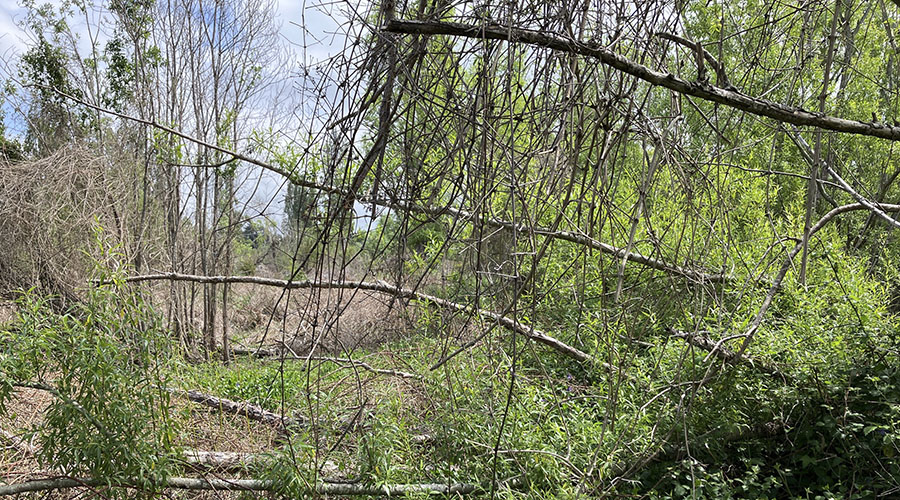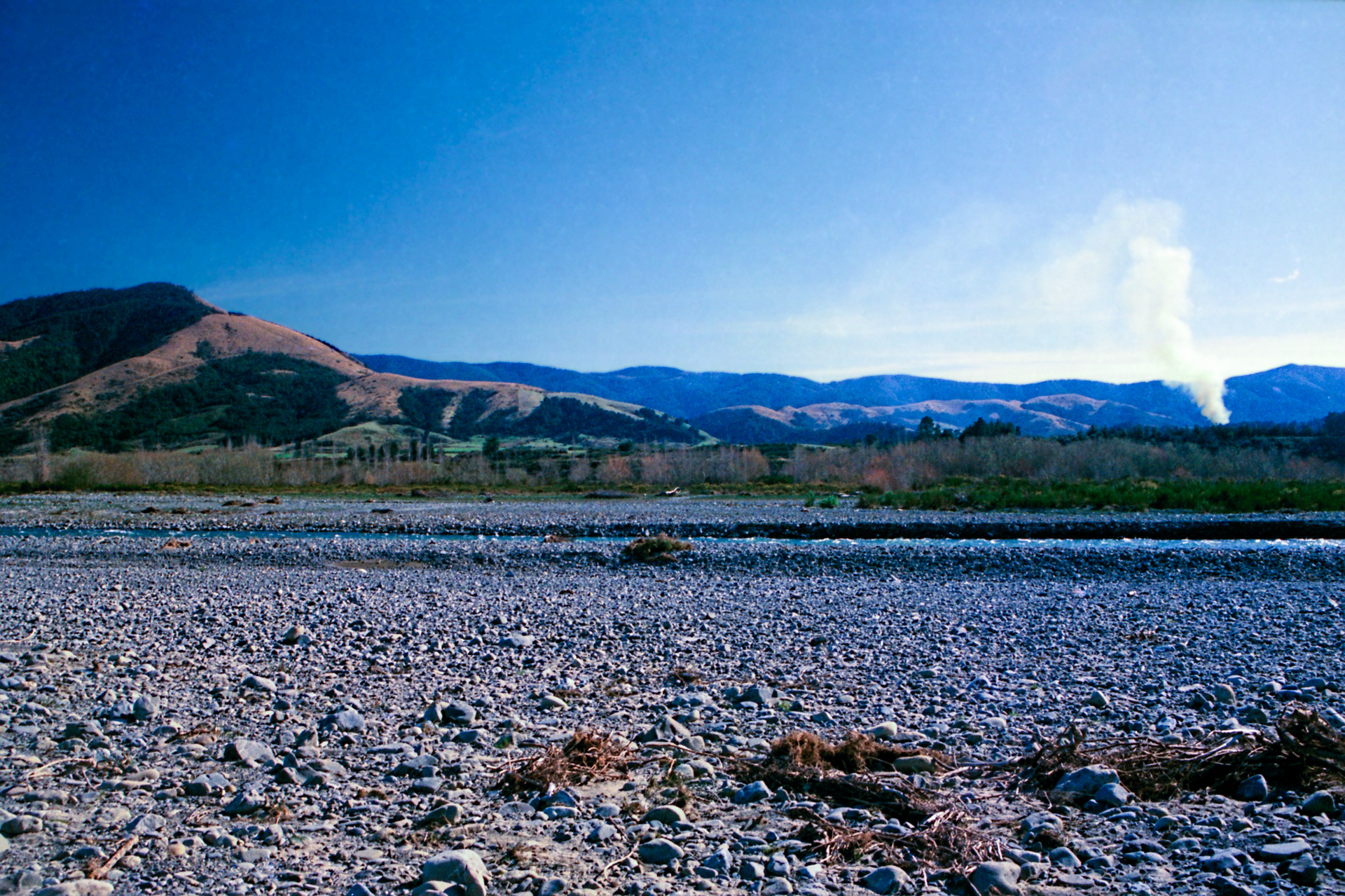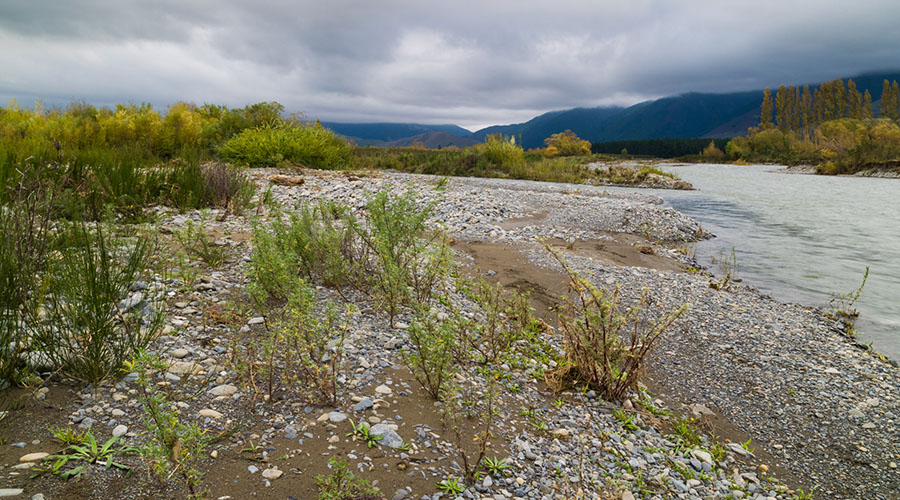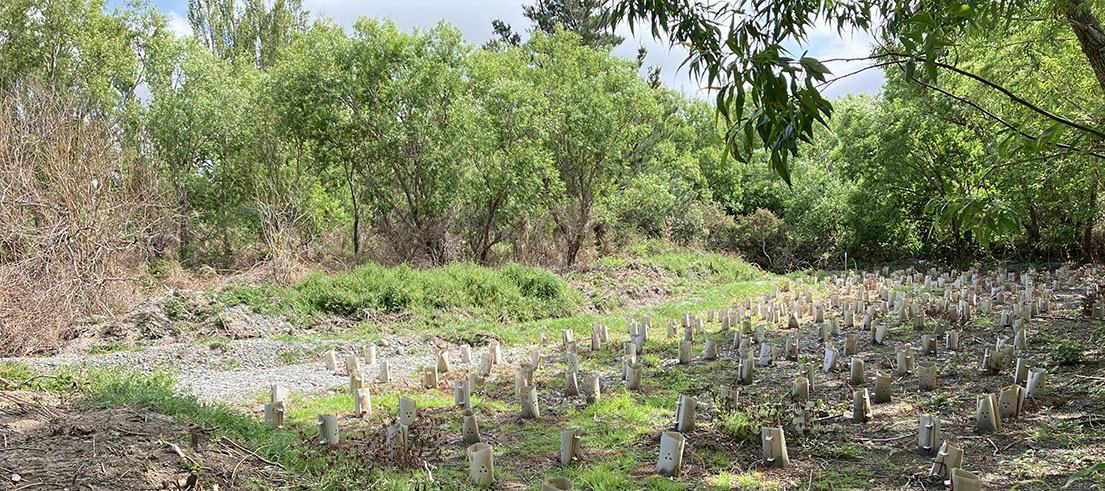
Joining generations of Glentui guardians
Mā whero mā pango, ka oti te mahi (with the red and the black the work will be complete).
Since the 1960s, four generations have worked to control invasive weeds and restore native trees in Glentui. Now, an Environment Canterbury project is continuing the kaitiaki work they began.
The Glentui-Bennetts Road site is one of three locations, totalling 24.8 hectares along the Rakahuri Ashley River, that will benefit from targeted weed control and planting of 25,860 native plants. The Glentui site covers 13 hectares, with 4500 native plants in the ground.
Targeted weeding with the berm transition project
As part of this project, we are transforming sites on 23 rivers throughout Waitaha Canterbury through targeted weeding and enhancement planting.
Targeted weeding means leaving flood protection trees, native undergrowth, and native forest untouched while eliminating pest plants like old man’s beard and grey willow.
Benefits of this work include increasing habitat for manu, decreasing flood risk by supporting our flood protection trees, and increasing seed sources to re-establish native plant growth.
The Regionwide Berm Transition Project is part-funded by the Ministry of Business, Innovation and Employment’s Kānoa – Regional Economic Development and Investment Unit (64 per cent), with the remainder co-funded by us through a combination of contributions from partners and operational funding/rates.
Family kaitiaki history

The first tī kouka (right of frame)
In the 1960s, Irene Dacre (nee Young) purchased a property on Glentui-Bennetts Road, continuing the family's deep connection to the area since the 1870s. The property was retained successively and is now owned by Isabel and Allen Cookson, the parents of Blenheim-based, Chris Cookson.
Weeds weren't so prolific when Allen began his conservation work, planting native trees including kōhūhū and tī kouka, which he then seeded for further plantings. His work became a food source, attracting birds from across the river.
Chris recalls growing up seeing large colonies of terns and other braided river birds nesting in the river stretch out from the family home.
Working to restore the river berm
In recent years, when the Cookson family returned to Glentui during school holidays, Chris, his daughter, and his father undertook weed clearance and created native plant blocks. You can watch a video, presented by Chris' then eight-year-old daughter, Anna, on some of the work they've done there.
Indigenous biodiversity works will continue at the Glentui-Bennetts Road area as part of our work programme along the Rakahuri Ashley River and Chris has given us his support.
"'Mā whero mā pango, ka oti te mahi' (with the red and the black the work will be complete). This whakataukī refers to how different strands are woven together to create a whole, which is particularly apt given that the Rakahuri Ashley is a braided river, and I think this sums up how the regeneration project can work," he said.
We recently finished targeted weeding following the completion of the 2022 planting season. Newly installed plants require care as they grow, so the first round of planting area maintenance has also been carried out.
Like river braids, our project and the Cookson family's are carried out separately, while working towards the same goal of gaining back Glentui land from encroaching weeds and re-establishing native plant life.
Woven strands create a whole
The Rakahuri, its tributaries, wetlands and lagoons are significant mahinga kai sources of Ngāi Tahu.
Chris tells, "Mum mentioned she asked some Ngāi Tahu people on one occasion if they had any connection with the area, and they stated not that part of the river.
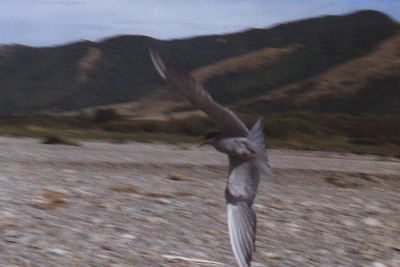
A nesting tern in protection mode, taken in the 1980s.
"I think, although the bit at Glentui-Bennetts Road is very much our story, it's part of a bigger story where the river binds everything and everyone together. A river is an ecosystem, and what happens upstream affects what happens downstream, so everything is connected.
"Like the strands of the river itself, people of different origins can be woven together in a common desire to see the mana of the river restored.
"There's a well-known whakataukī: 'Whatungarongaro te tangata, toitū te whenua', (people disappear but the land remains), and this has been our family philosophy around how we regard this area: when we're gone, we want to leave it in better condition than what we found it, particularly for Dad. As he nears the end of his life, a forest is a far better memorial than a gravestone."
Between the kaitiakitanga of the Cookson family and Environment Canterbury, we're working to ensure the Glentui river berm is well and thriving for the generations to come.

